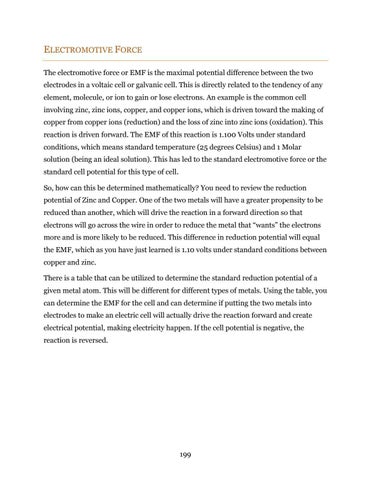ELECTROMOTIVE FORCE The electromotive force or EMF is the maximal potential difference between the two electrodes in a voltaic cell or galvanic cell. This is directly related to the tendency of any element, molecule, or ion to gain or lose electrons. An example is the common cell involving zinc, zinc ions, copper, and copper ions, which is driven toward the making of copper from copper ions (reduction) and the loss of zinc into zinc ions (oxidation). This reaction is driven forward. The EMF of this reaction is 1.100 Volts under standard conditions, which means standard temperature (25 degrees Celsius) and 1 Molar solution (being an ideal solution). This has led to the standard electromotive force or the standard cell potential for this type of cell. So, how can this be determined mathematically? You need to review the reduction potential of Zinc and Copper. One of the two metals will have a greater propensity to be reduced than another, which will drive the reaction in a forward direction so that electrons will go across the wire in order to reduce the metal that “wants” the electrons more and is more likely to be reduced. This difference in reduction potential will equal the EMF, which as you have just learned is 1.10 volts under standard conditions between copper and zinc. There is a table that can be utilized to determine the standard reduction potential of a given metal atom. This will be different for different types of metals. Using the table, you can determine the EMF for the cell and can determine if putting the two metals into electrodes to make an electric cell will actually drive the reaction forward and create electrical potential, making electricity happen. If the cell potential is negative, the reaction is reversed.
199




























